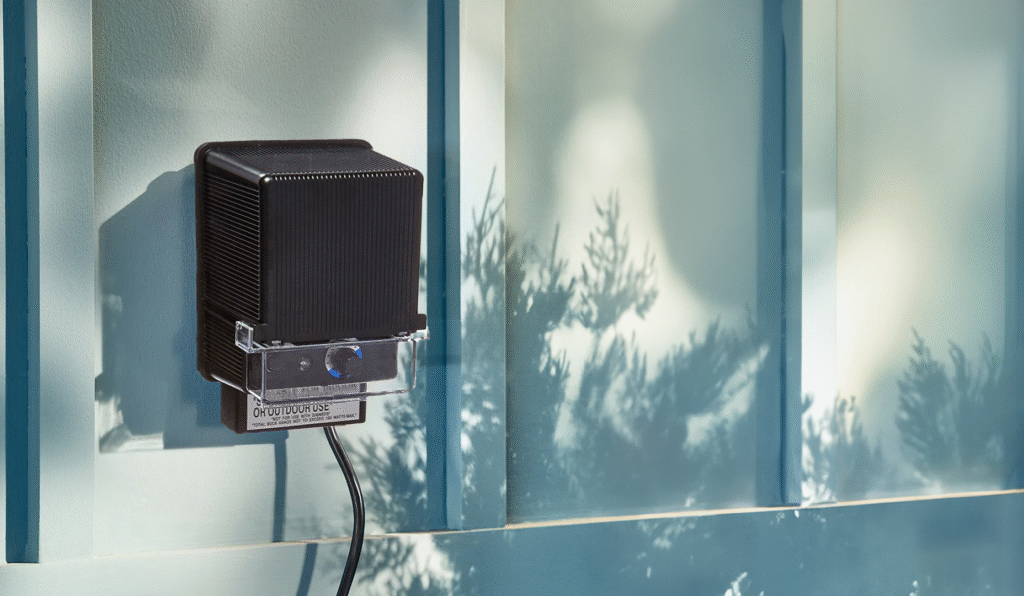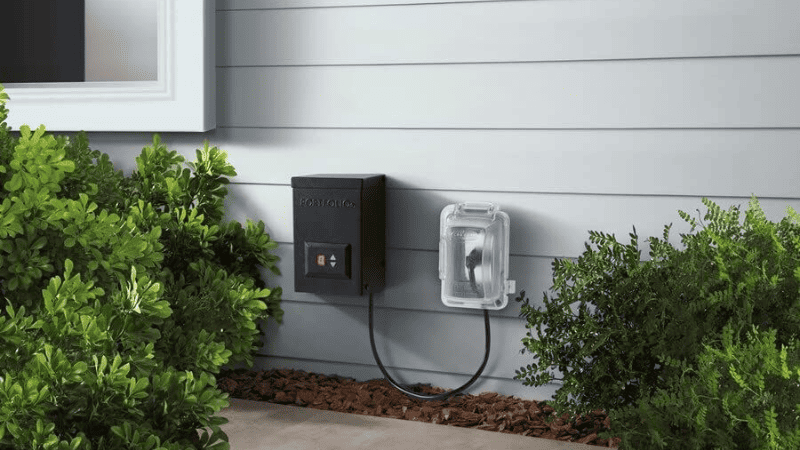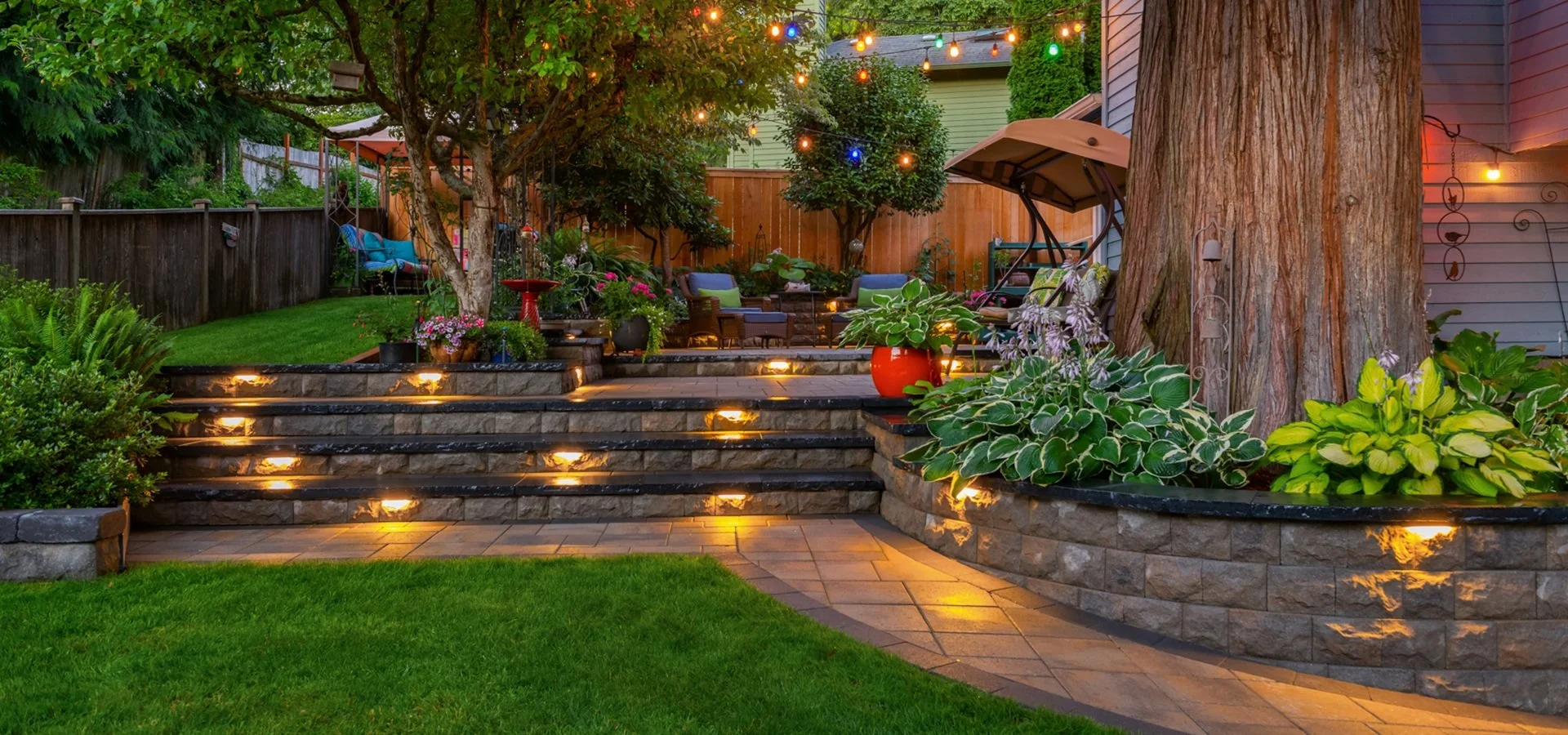
- FREE Shipping on all orders! Limited time!
- support@tru-scapes.com
Have you ever stepped into a backyard glowing with perfectly placed lights, creating a warm, inviting ambiance? The secret behind that magic often lies in a small but mighty device: the landscape lighting transformer. If you’re a homeowner looking to elevate your outdoor space, understanding how these transformers work is your first step toward a stunning, well-lit yard. In this guide, you’ll learn everything you need to know about landscape lighting transformers—from choosing the right one to installing it like a pro. Let’s dive in and shed some light on this essential component!

A landscape lighting transformer is the heart of any low-voltage lighting system. It takes the standard 120-volt household current and steps it down to a safer, more manageable 12 or 15 volts. This low voltage powers your outdoor lights, ensuring they shine brightly while keeping energy costs low and safety high, as outlined by lighting industry standards.
Why does this matter? Low-voltage systems are easier to install, safer for outdoor use, and more energy-efficient lighting than high-voltage alternatives. Whether you’re illuminating a deck, highlighting a garden, or accentuating a pathway, the transformer ensures your lights perform reliably night after night.
At Truscapes Deck Lighting, we specialize in creating breathtaking outdoor lighting solutions for homeowners. Our expertise in low-voltage systems, including transformers, helps you transform your yard into a functional and beautiful extension of your home.
You might wonder, “Can’t I just plug my lights into a regular outlet?” While that’s possible for some setups, landscape lighting transformers offer unique benefits that make them a must-have for most outdoor projects:
For middle-aged homeowners passionate about home decor, a transformer is the key to creating a polished, professional-grade outdoor lighting setup that rivals any magazine-worthy backyard. Explore more about lighting your deck or garden for inspiration.
Not all transformers are created equal. Choosing the right one depends on your lighting design, the number of fixtures, and your aesthetic goals. Here’s a breakdown of the main types, informed by outdoor lighting best practices:
These heavy-duty transformers use a magnetic core to convert voltage. They’re known for their durability and ability to handle high-wattage loads.
Electronic transformers are lightweight and use electronic circuitry to step down voltage. They’re perfect for smaller setups or minimalist designs.
Smart transformers integrate with smart lighting technology, allowing you to control your lights via an app or voice assistant. They often include timers and dimming features.
| Transformer Type | Best For | Pros | Cons |
| Magnetic | Large systems, high wattage | Durable, reliable | Bulky, less efficient |
| Electronic | Small to medium systems | Compact, energy-efficient | Limited wattage, less durable |
| Smart | Tech-savvy homeowners | App control, timers | Expensive, needs Wi-Fi |
At Truscapes, we recommend magnetic transformers for expansive deck or garden lighting projects, while electronic or smart transformers work beautifully for smaller, modern setups.
Selecting the perfect transformer can feel overwhelming, but it’s straightforward when you break it down. Here are the key factors to consider:
Add up the wattage of all the lights in your system. For example, if you have 10 lights at 5 watts each, your total is 50 watts. Choose a transformer with at least 20% more capacity than your total wattage to avoid overloading. In this case, a 200W transformer would be ideal.
Most landscape lights require 12 volts, but some specialty fixtures may need 15 volts. Check your lights’ specifications and ensure your transformer matches.
Thinking about adding more lights later? Opt for a transformer with extra capacity to accommodate future growth.
Since transformers are exposed to the elements, look for models with weatherproof ratings (like IP65 or higher). Stainless steel or heavy-duty plastic casings are great choices for durability.
Do you want a timer to automate your lights? A photocell to turn them on at dusk? Smart features for app control? These extras can enhance convenience but may increase costs.
Pro Tip: At Truscapes, we often guide homeowners to start with a mid-range transformer for flexibility. It’s powerful enough for most decks or patios but won’t break the bank.
Ready to get your transformer up and running? Installation is simpler than you might think, but it requires careful planning. Here’s a step-by-step guide:
Safety Note: If you’re not comfortable working with electricity, hire a professional electrician to ensure a safe, code-compliant installation.
With proper maintenance, a quality transformer can last 10–20 years. Magnetic transformers tend to outlast electronic ones due to their robust construction.
Yes! Many transformers have multiple terminals, allowing you to create separate zones (e.g., deck lights and pathway lights) with different schedules or intensities.
An underpowered transformer can cause lights to dim or flicker, and it may overheat, shortening its lifespan. Always choose a transformer with enough capacity.
Not necessarily. If you’re handy and follow safety guidelines, you can install it yourself. However, complex systems or unfamiliar electrical work may require a pro.
To keep your transformer running smoothly, follow these simple transformer maintenance tips:
By maintaining your transformer, you’ll ensure your outdoor lighting stays vibrant and reliable for years.
At Truscapes Deck Lighting, we’re passionate about helping homeowners create outdoor spaces that feel like an extension of their homes. Our low-voltage solutions, powered by top-quality transformers, are designed to enhance your deck, patio, or garden with elegance and efficiency. Whether you’re a DIY enthusiast or prefer professional installation, we offer products and expertise tailored to your needs.
For example, one of our clients, a homeowner in Florida, wanted to highlight their newly built deck for evening gatherings. We recommended a 150-watt magnetic transformer to power a mix of deck post lights and stair risers. The result? A warm, inviting space that’s now the envy of their neighborhood.

Landscape lighting transformers are the unsung heroes of outdoor lighting, delivering safety, efficiency, and flexibility to your backyard oasis. By choosing the right transformer, installing it correctly, and maintaining it over time, you can create a stunning, well-lit space that enhances your home’s curb appeal and functionality.
Ready to transform your outdoor space? Start by exploring Tru-Scapes transformers and lighting solutions. Have questions or need advice on your project? Drop a comment below or share this guide with a friend who’s ready to light up their yard. Let’s make your outdoor dreams shine!

Have you ever noticed how a professionally lit deck seems to come alive at night? It’s not just about brightness;

Your retaining wall is a hardworking feature of your landscape. It tames slopes, creates usable space, and adds structure to